#roman hypocaust
Text

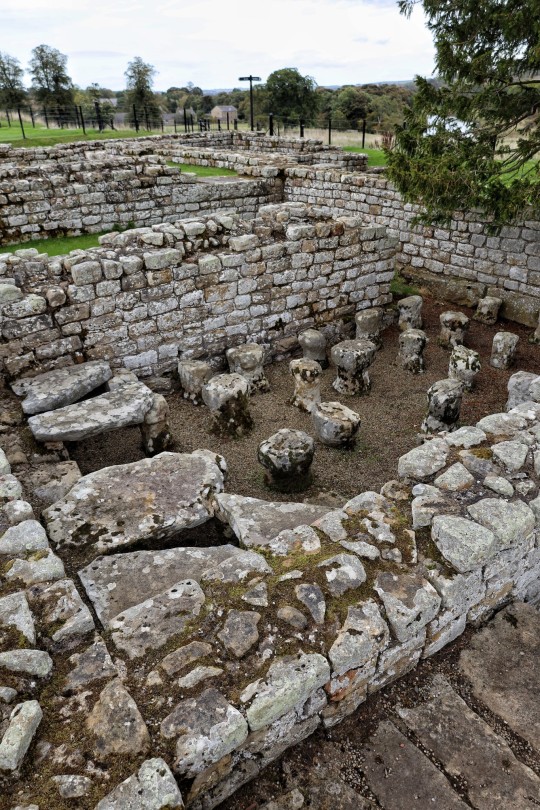

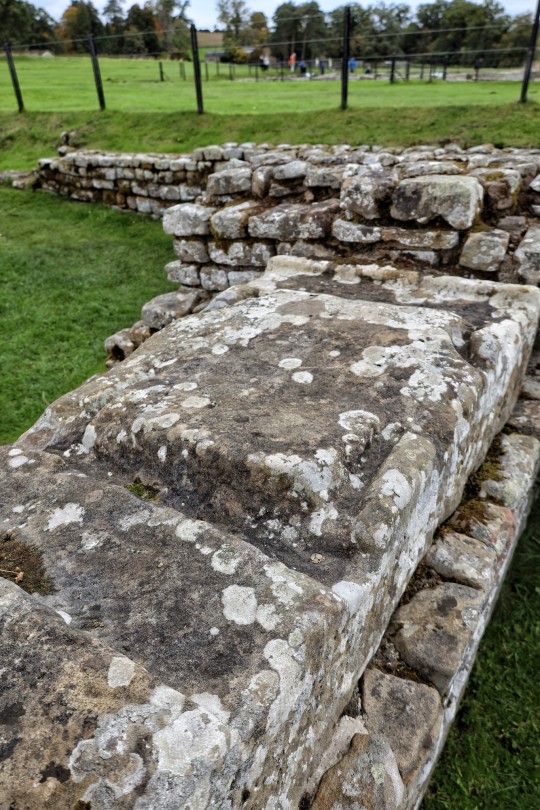
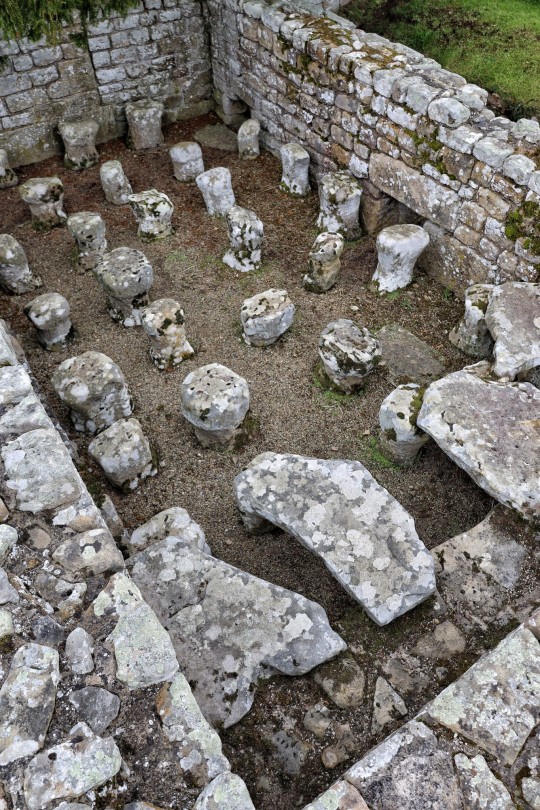


Chesters Roman Fort Commander's Residence, Hadrian's Wall, Northumberland
#roman army#roman fort#chesters roman fort#hadrians wall#landscape#ancient living#ancient culture#ancient craft#relic#stonework#roman society#roman hypocaust#flagstone#archaeology#Northumberland
51 notes
·
View notes
Text
Archaeologists in Germany have excavated a 2,000-year-old Roman villa. Not only was this luxury home fitted with frescoed walls, but the elite residents also enjoyed underfloor heating!
65 notes
·
View notes
Note
What did hywel dda's kids do? (Sorry if this sent twice tumblr keeps thinking im a robot)
Yeah we've all been there
Okay so the issue is Old to Medieval Welsh inheritance laws. Post-Romans, Wales was split into a handful of kingdoms, Saxons having a go in the east (and failing lol, get mountained idiots), and all the engineers who remembered how to make hypocaust central heating were gone. And then along comes Hywel Dda, with a dream and also an army.
He's already king in his own kingdom, right, but his brother dies and leaves him Seisyllwg which he joins with Dyfed to create Deheubarth; he also Gwynedd and Powys from his nephews, this giving him the north. As a final flourish, he forges an alliance with a Saxon king, and thus gets Gwent and Glywysing; meaning, in short, that for the first time in history, the actual country of Wales is formed and united under one ruler. He was, very literally, the first King of Wales.
And what he does with that power is amazing. Proper golden era shit. He enacts the Laws of Hywel Dda, a legal system based on compensation and rehabilitation, to tackle crime in place of the "Just hang them" system - it's a justice system that's notable for its incredibly progressive protections and rights for women, in fact, because the rest of Europe was LACKING in that regard. He makes it illegal for someone to be charged for stealing bread, as long as they were 'starving' i.e. had passed through two towns without eating before the theft. He commences progressive healthcare systems. He starts projects to educate the masses. He does many fabulous and wonderful things, and probably gives great head.
And then he dies and, in accordance with Welsh inheritance laws, splits Wales back into three kingdoms to give a piece each to his three sons, and Gwynedd is reclaimed by the nephews, and that's that.
Well. It was nice while it lasted.
255 notes
·
View notes
Text
Right, okay, there's no way I read this when I was wee, because I'm pretty sure I would have remembered this:
“Well, very long ago, on the spot where the Wild Wood waves now, before ever it had planted itself and grown up to what it now is, there was a city—a city of people, you know. Here, where we are standing, they lived, and walked, and talked, and slept, and carried on their business. Here they stabled their horses and feasted, from here they rode out to fight or drove out to trade. They were a powerful people, and rich, and great builders. They built to last, for they thought their city would last for ever.”
“But what has become of them all?” asked the Mole.
“Who can tell?” said the Badger. “People come—they stay for a while, they flourish, they build—and they go. It is their way. But we remain. There were badgers here, I’ve been told, long before that same city ever came to be. And now there are badgers here again. We are an enduring lot, and we may move out for a time, but we wait, and are patient, and back we come. And so it will ever be.”
“They built to last, for they thought their city would last for ever.” That's surely the Romans. That's how we think of Roman architecture, compared to that of any other time period.
I'm pretty sure wee!me would never have forgotten a detail like the fact Mr Badger's house is possibly built into someone's old hypocaust. :D
Also, just this:
We are an enduring lot, and we may move out for a time, but we wait, and are patient, and back we come. And so it will ever be.
Beautiful.
45 notes
·
View notes
Note
Also, I take issue about Roman heated floors being the hallmark of cool vampire civilization. SLAVES did that in Rome. The thing they're glorifying is slavery.
Are you referring to that scene where Lenore mentions that they use pipes to channel waste heat? Because, well. I'm not surprised in the slightest that they're glorifying slavery, considering the context 🙃 just par for the course for the show whose very philosophy is entrenched into British imperialism!
but yeah, funny that Lenore is quick to flaunt that ohhh they're so advanced, and ahhh they're not monsters because they keep Hector warm (except when they wash him with freezing water, i swear if only he had one more braincell), but she accidentally implied that they keep slaves in the castle so that the hypocaust can function. And aren't some of the people Isaac kills in S4E6 humans? 🤔
obv they're a castle of evil vampires, so the idea of them having slaves isn't so shocking. but you know. funny that they gloss over it because we need to emphasize how cool our elves vampires are.
(also, apparently hypocausts fell in disuse after the fall of the Western Roman Empire, but still persisted for longer in the Eastern Roman Empire. To be fair, I'm not sure how common it was at the time, but it wasn't lost technology like Lenore/the show wants us to think)
11 notes
·
View notes
Note
Could I ask you about Viserys I? In a transcript for a deleted scene of HOTD, Viserys is looking at a statue of Jaehaerys I and lamenting that he is somehow expected to do better than him (since his reign followed his). I read somewhere that medieval kings were remembered by either wars fought or by what they built. Viserys' reign was almost entirely peaceful (except for the Stepstones conflicts). What do you think Viserys could have built (in terms of infrastructure, fortifications, etc.) during his reign to improve the kingdom?
Given the Stepstones conflict, Viserys might have done well building out a larger harbor in King's Landing, with multiple wharves and a solid lighthouse, to improve the facilities for the Royal Fleet and improve trade (and thus tariffs and harbor fees). He could have build a place of great worship (remember, the Great Sept of Baelor doesn't exist yet). He could have invested more into completing Barth's vision for King's Landing - Barth had ideas on sewers and other sanitation that were very on the nose. While the winters aren't as devastating as they are up north, having some buildings with old Roman-style hypocausts might help, particularly the poor to help warm themselves during the winter. He might have built a better defensive network of watchtowers in the south along the Dornish border to discourage border raids, perhaps coupled with offers of trade to help resolve the Dornish issue favorably to Westeros - I doubt he'd actually be able to secure a marriage and treaty, but improving relations while showing strength is typically what you have to do in medieval statecraft.
Thanks for the question, Anon.
SomethingLikeALawyer, Hand of the King
36 notes
·
View notes
Note
Hypocausts were too small for humans to crawl through — they were heated from the outside — and slaves were absolutely allowed (if not required!) to bathe. They had it hard enough without you making stuff up
im going to to say this one time and then im ignoring that post for good: you are supremely missing the point (in the post where i had an entire section about The Point). i really should have known that bringing up the roman empire was a mistake so that's on me but i will reiterate: the point of the post was not actually whether or not the romans were entombing their slaves. the point of that post was my professor's callous assumption that inhumane treatment is 1. a necessary and almost mundane aspect of technological innovation and 2. it's less important to talk about people than it is to talk about art divorced from context.
other things about that post that people are misunderstanding: i did not say chatgpt is good, i said it is presented AS a public good when it is in fact not. i also really did mean to say stop fucking ordering from amazon. there are lots of ways to circumvent amazon and giving up and deciding its too difficult or improbable to find those alternatives is childish. also, my professor was a dickhead and she was not being persecuted by a classroom of teenagers who were concerned that she just stated an incredibly disturbing idea as fact and then refused to give it any more thought.
my Point was not about the actual realities of the roman empire. i was (gasp) utilizing a technique called "anecdote" to lead into a complicated idea called "social critique". please let me know if this was too hard to follow by the way.
also, seeing as every slave the roman empire ever had is dead now, i dont really know how i could be materially making their lives worse by posting on tumblr. appreciate the heads up though!
13 notes
·
View notes
Photo



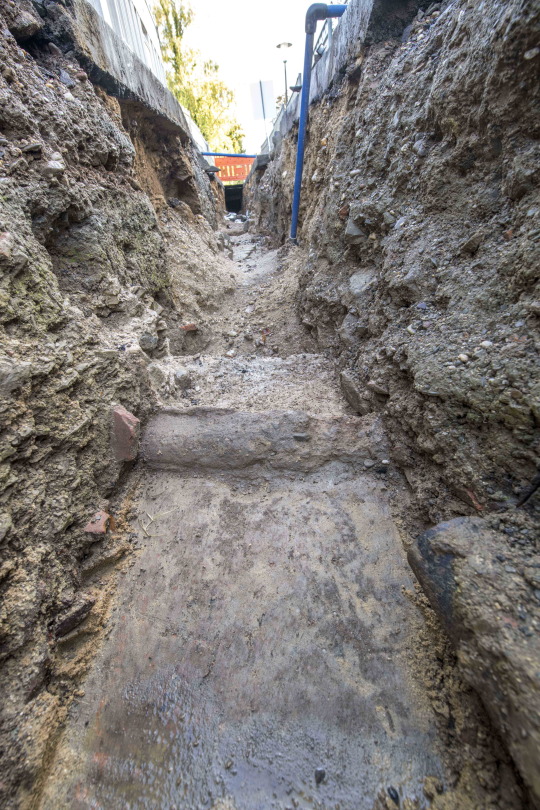

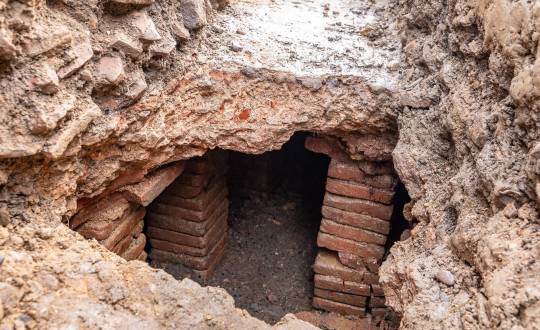
2,000-year-old luxury Roman villa with “underfloor heating” found in Germany
A luxury Roman villa with a thermal bath and underfloor heating has been unearthed in Kempten, Bavaria, one of the oldest settlements in Germany.
Ancient Romans lived in homes with thermal baths and underfloor heating, as evidenced by an excavation in the Bavarian town of Kempten. The uncovered house is one of the oldest in Germany.
The Domus was large, at least 800 square meters over two stories, and was situated close to the temple district, the most coveted area of the ancient city, on the western edge. It had screed floors, frescoed walls, and private hot baths with hypocaust heating under the floor.
When presenting the excavation, the city reported that the remains that had come to light were among the oldest in Germany. Due to its Roman past, Kempten is more than 2000 years old, making it one of the oldest cities in Germany.
The most exciting thing about the finds for the archaeologists: They belonged to private stone houses. “You won’t find such private buildings in stone anywhere in southern Germany at this early time – at the beginning of the first century,” says Johannes Schiessl from the city archeology department of Kempten. That means: while elsewhere the Roman settlers still lived in wooden and clay buildings, the high society in Cambodunum apparently already resided in chic brick townhouses.
Cambodunum is the oldest German city mentioned in writing. In 15 B.C., Nero Claudius Drusus Germanicus, the father of the Germanicus typically associated with that cognomen, and his brother Tiberius razed a Celtic settlement on the site of what would later become Kempten, founded Cambodunum.
The city of Cambodunum was built in the first decade of the new millennium on a typical Roman grid plan, with major public buildings such as baths, temples, and a forum. It served as the region’s administrative center and the residence of the Roman governor of the Roman province of Raetia. Cambodunum remained the province’s capital until 120 A.D., when it was replaced by Augsburg, aka the Roman colony of Augusta Vindelicum.
The discovery of the luxury private Domus underscores that the Romanization of Bavaria, the development of an urban culture mirroring Rome’s, began in Kempten. It also demonstrates that the wealthy homes and significant civic structures in the early city, which were thought to have been constructed primarily of wood, were built with fine stone and brick.
By Leman Altuntaş.
#2000-year-old luxury Roman villa with “underfloor heating” found in Germany#Kempten Bavaria#ancient home#ancient artifacts#archeology#archeolgst#history#history news#ancient history#ancient culture#ancient civilizations#roman history#roman empire
18 notes
·
View notes
Text
Explaining One of VTMB Paintings (part 15)
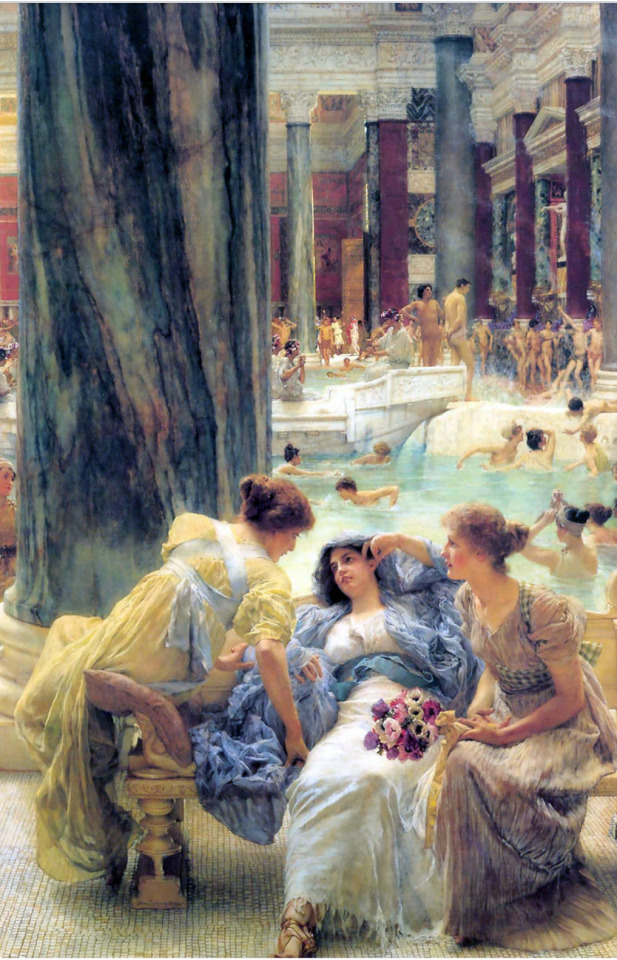
The Baths of Caracalla, oil on canvas (1899) by Sir Lawrence Alma-Tadema
Sir Lawrence Alma-Tadema(Jan 8 1836- Jun 25 1912) was a Dutch painter born in Dronryp , Netherlands and later became a UK denizen(an old legal status were you were able to own land and like in the UK without being a Citizen but still enjoying most of the rights). His art styles include both Romanticism (which this painting is) and Neoclassical.Before 1860s many of his works were of Merovingian subjects(Merovingian Dynasty was a Frankish(Germanic people who lived in what’s now part of Modern day France) ruling family in power from the mid 5th century to 751). His painting The Clotilde and the Tomb of her Grandchildren [1859 ](see below) is an example of Merovingian subject matter in a NeoClassical style. Despite his foundness Merovingian subject was not very popular on the international art market so he switched to painting focused on more popular subjects to depict in his artwork mostly focused on as historic/ ancient Egyptian, Roman and Greek subjects and events.

The Clotilde and the Tomb of her Grandchildren, oil on canvas (1858) by Sir Lawrence Alma-Tadema
Romantic art focused on emotions, feelings, and moods of all kinds including spirituality, imagination, mystery, and fervor. The subject matter varied widely including landscapes, religion, revolution, and peaceful beauty. The brushwork for romantic art became looser and less precise. The great Romantic artist Caspar David Friedrich summed up Romanticism saying "the artist's feeling is his law".
The Baths of Caracalla is a real Roman public bath built in Rome, Italy (the second largest in the city) sometime between 212 AD and 217 AD and was in operation until around 537 AD when it fell into disuse. The paining shows the historical imagination of what the baths would have looked like during the height of its popularity as it would be a major social space public space.
Historically Roman public baths acted as community centers where free and included access to a wide verity of atonal features such as gymnasiums for men to exercise; statues, murals and other public works of art; restaurants to buy multiple types of food and even a library that allowed everyday Roman citizens access to literature works they wouldn’t be able to offers to buy. Roman Public baths acted as not only bath houses but as a Library, gym, spa, restaurant and public art gallery. The waters of the baths were heated by a hypocaust, a heating system where coal and wood is burned under the ground.

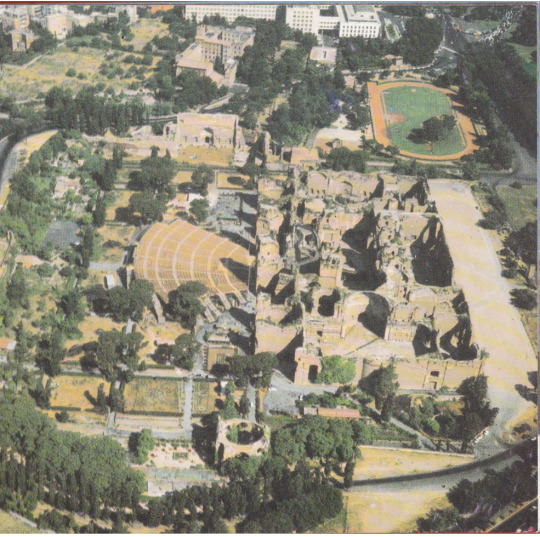
The baths were most likely built by emperor Septimius Severus (part of the Severan Family) as they are located in the southern part of Rome where during that time members of Severan family were known to commission a number of public works in that specific area of the city for political favor. The site the baths were built on where originally part of a Garden estate known as horti Asiniani by Gaius Asiniani Pollio during the reign of Augustus( first emperor of Rome 63 BC to 14 AD, so about 200 to 260 years before the construction of the baths). The Garden was home to a number of sculptures such as the Farnese Bull which were kept as part of the public art displays of the baths when they were in use. During the height of its popularity the baths are estimated to have a daily capacity of 6,000 to 8,000 visitors a day.

Farnese Bull, marble sculpture (2nd century BC) by Apollonius of Tralles
Even after falling into ruin the Caracalla baths still found use as in the 14th century a Christian pilgrim site was set up near by due to the proximity to the Church of Saint Nereo e Achilleo( built facing the baths in the 4th century) and was used by the pilgrims as their main water source. But in 537 AD during the war of the Gothic war the city’s water supply was cut by Vitiges of the Ostrogoths and the baths were once again abandoned.

During the 6th and 7th century the baths were still in the very sparely populated area of Rome and were used to burry pilgrims who died in the xenodochium ( hospital specifically for treatment of foreign pilgrims) of the Church of Saint Nereo e Achilleo. Then starting in the 12 century the baths were used as a quarry for stone and decorative masonry that were often used in the construction of churches. In the 15th century Pope Pius II used stone from the baths in the construction of the Loggia of the Benediction (fancy decorative balcony used by the Pope) at St Peters Basilica, Vatican City. (See photo below)
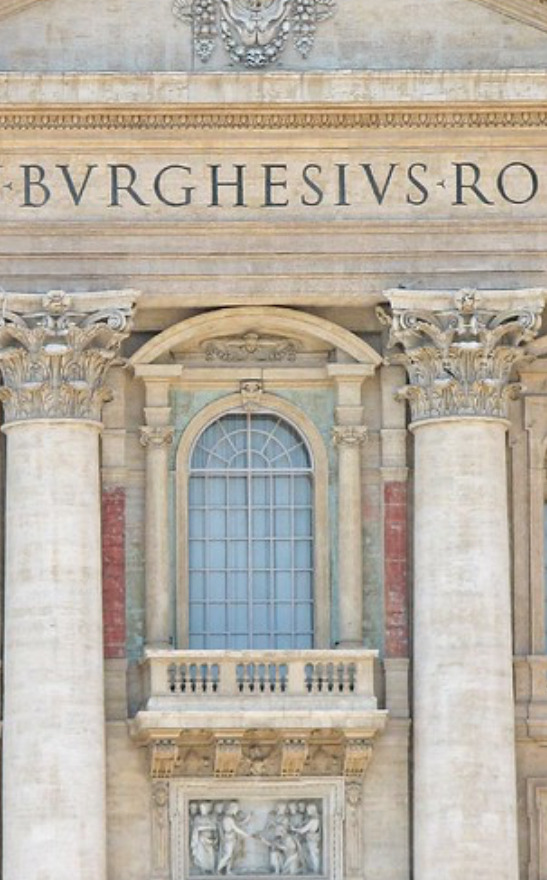
it wasn’t until the 16th and 18th century when interest in restoring the Baths as a historic site began. With the excavation of the baths beginning in 1824 by Count Egidio di Velo.
The Baths of Caracalla have been a popular subject of a number of different art works over the years by a wide number of artist who ether are depicting historical scenes of artist imaginations of the baths in its prime or capturing architectural beauty that remained even after it fell into ruin. (see examples below)

Baths of Caracalla Rome: interior of the Tepidarium, watercolor (1845) C.R. Cockerell and assistant Jackson used in lecture of architecture. Image based on illustration based of detailed restoration done on the baths found in a book published by French architect G.A Blouet in 1828.

Interior of the Baths of Caracalla, print if etching with watercolor and gouache(circa 1780) by Swis painter and engraver Abraham-Louis-Rodolphe Ducros.
#vampire the masquerade bloodlines#VTMB#explaining one of vtmb paintings#art history#romanticism#The baths of Caracalla#Ancient Roman#Sir Lawrence Alma-Tadema
1 note
·
View note
Text
Roman Song Lyrics
Roman life
Marched up into England
In 43 AD
And made settlements
The Romans found Chester
And got it good
just like they knew they would
The Romans built Chester in 74 AD (quick)
And called it Deva
Deva was a military fortress
Built for roman soldiers
Ruled by emperor Vespasian
Built for roman soldiers
Built in 74 AD
On high ground
20 percent bigger
than other fortresses In Britain
Using the sea for trade
Legionary headquarters
They got Deva good
Just like they knew they would
Built with sandstone
Romans built it well
Put Deva under their spell
Deva was a military fortress
Built for roman soldiers
Ruled by emperor Vespasian
Built for roman soldiers
Built in 74 AD
75 percent of grain
Minerva's shrine carved into sandstone
Can be found in Edgar's field
Was the roman diet
Minerva was the goddess of a lot
Such as war, wisdom, justice and trade
Fish was also eaten
The romans believed she would watch them
As she was carved into the quarry wall
The romans knew they would get some
Making space in work for religion
In their diet
In their diet
In their diet
Deva
Had a roman bath house
Heated by a hypocaust
Like under floor heating
Deva had an amphitheatre
The largest in Britain
Here fights and celebrations
Took place with gladiators
Excavated later
In 1930 by archaeologists
Break it down
Deva (repeat)
Please read these lyrics!! You will need too anyway as my singing in the song is not the best...
2 notes
·
View notes
Text
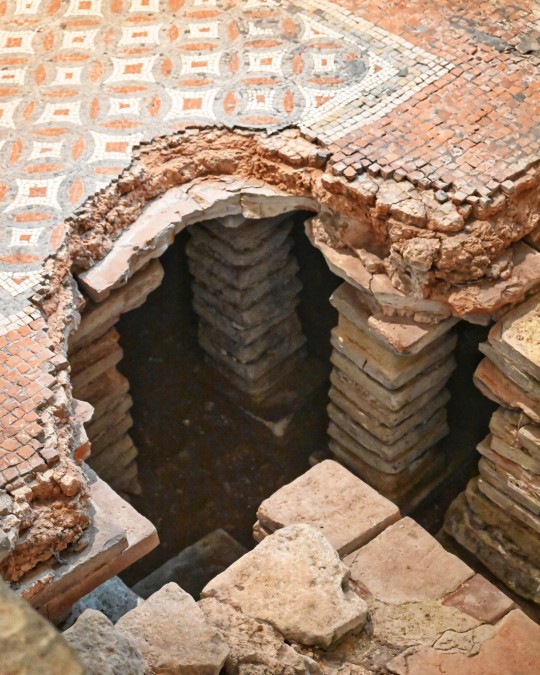
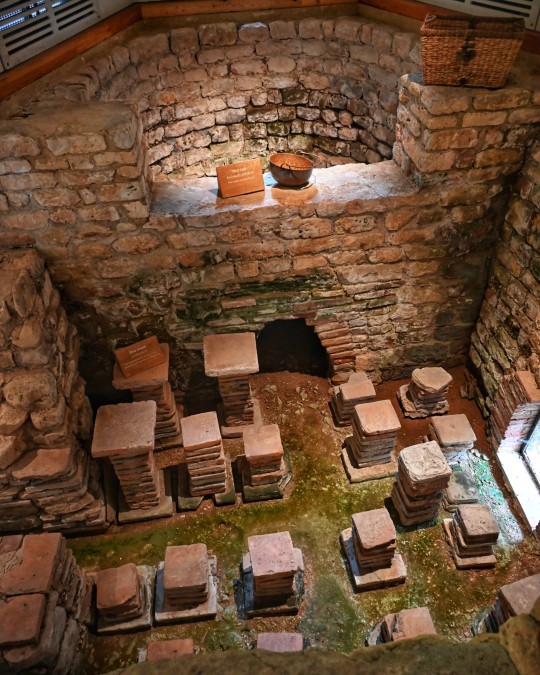

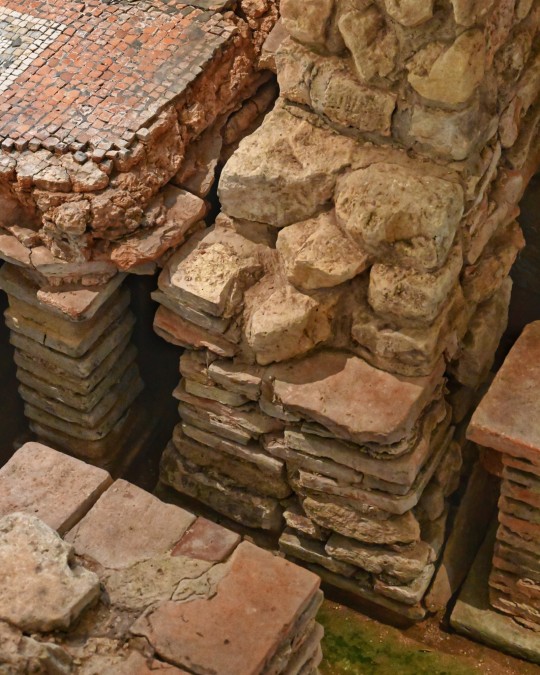



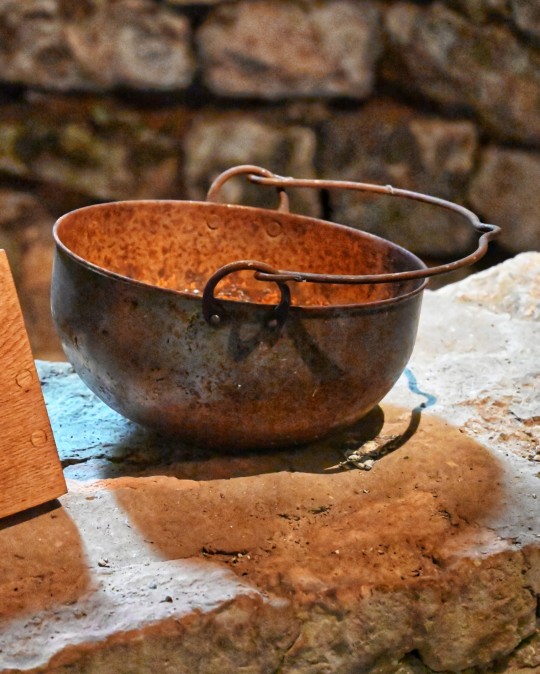

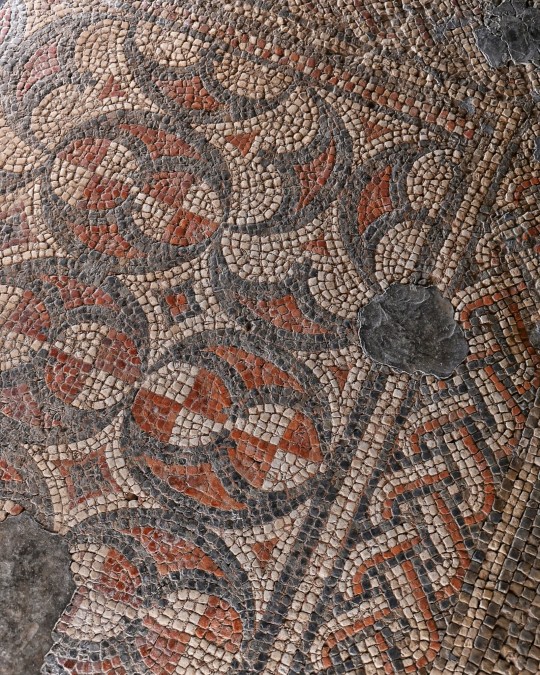
The baths at Chedworth Roman Villa, Gloucestershire.
#roman#roman baths#roman living#roman bathhouse#bathing#relic#mosaics#hypocaust#tiles#pottery#ancient living#ancient craft#Chedworth#roman britain#roman villa#archaeology
872 notes
·
View notes
Note
story time about my awkwardness :
So in secondary school I had Greek and Latin classes (my passion), and one time we had to do a presentation about the remains of a Roman city and we had to describe the buildings and all.
So I was talking about the baths and my fucking dumbass said 😭
I said that the baths were heated by holocaust
I meant to say hypocaust
That was a horrible moment, like my teacher was shocked and some guys were laughing their asses of and I wanted to jump out of the window
So yeah end of the story bye 😭
I would have been scream laughing, oh my god.
What an unfortunate slip of the tongue. 😭😅
4 notes
·
View notes
Text
Full Spectrum Infrared Saunas: From Ancient Wisdom to Modern Wellness

Sauna bathing has been a cherished practice spanning millennia, revered in cultures worldwide for its profound therapeutic benefits. Today, amidst our quest for holistic wellness, a modern innovation emerges full-spectrum infrared saunas. These cutting-edge sanctuaries harness the power of infrared technology to deliver a deeply rejuvenating experience that transcends conventional sauna therapy. In this exploration, we unveil the journey of full spectrum infrared saunas, tracing their roots from ancient wisdom to their pivotal role in modern wellness practices. Join us as we delve into the radiant world of infrared heat and its transformative effects on mind, body, and spirit.
The Origins of Sauna Therapy
Finnish Heritage: The Finnish people have long revered the sauna as not just a place for physical cleansing, but also as a sanctuary for spiritual and social bonding. The traditional Finnish sauna, heated with wood-burning stoves and adorned with fragrant birch branches, has been a cornerstone of Finnish culture for centuries.
Native American Rituals: In Native American cultures, the sweat lodge served as a sacred space for purification and healing ceremonies. Constructed with natural materials and heated with hot stones, these sweat lodges facilitated deep sweating and spiritual connection with the natural world.
Roman Influence: Even in ancient Rome, public baths known as integral to daily life, offering a space for relaxation, socializing, and cleansing. The Roman baths, heated by underground furnaces known as hypocausts, provided a precursor to the modern sauna experience.
Understanding Full Spectrum Infrared Saunas
Innovative Technology: Full spectrum infrared saunas utilize advanced infrared technology to generate heat, which differs from traditional saunas that rely on heated air. This innovative approach allows for a more comfortable and penetrating heat experience.
Wavelength Range: Unlike traditional saunas, full spectrum infrared saunas emit a range of wavelengths, including near, mid, and far infrared. Each wavelength penetrates the body at different depths, targeting various tissues and offering a comprehensive therapeutic effect.
Deep Tissue Penetration: One of the key benefits of full spectrum infrared saunas is their ability to penetrate deep into the body, reaching muscles, joints, and even organs. This deep tissue penetration promotes detoxification, relaxation, pain relief, and improved circulation.
Gentle and Efficient Heat: Full spectrum infrared saunas provide a gentle and efficient form of heat that is well-tolerated by most individuals. Unlike traditional saunas, which can feel uncomfortably hot and humid, infrared saunas offer a more comfortable environment for extended sessions.
Health Benefits of Full Spectrum Infrared Saunas
Deep Detoxification: Full spectrum infrared saunas penetrate deeply into the body, promoting sweat production and facilitating the release of toxins stored in fat cells. This detoxification process helps cleanse the body from within, leaving you feeling refreshed and rejuvenated.
Pain Relief: The gentle heat generated by full spectrum infrared saunas penetrates muscles and joints, providing relief from chronic pain conditions such as arthritis, fibromyalgia, and muscle soreness. Regular sauna sessions can alleviate discomfort and promote better mobility.
Improved Circulation: The infrared heat from full spectrum saunas dilates blood vessels, promoting better circulation throughout the body. Enhanced blood flow delivers oxygen and nutrients to tissues, supporting healing and recovery processes.
Stress Reduction: Stepping into a full spectrum infrared sauna is like entering a sanctuary of tranquility. The soothing heat relaxes muscles and calms the mind, reducing stress levels and promoting a sense of well-being.
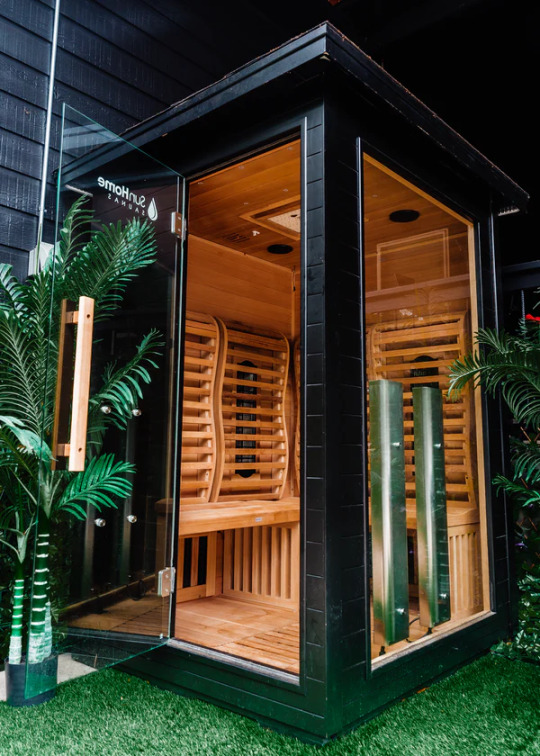
Practical Considerations and Usage
Safe Operation: Before indulging in the bliss of a full spectrum infrared sauna session, ensure that you understand how to operate the sauna safely. Familiarize yourself with the controls and settings to adjust the temperature and duration according to your comfort level.
Preparation: Prepare your body for the sauna experience by hydrating adequately beforehand. It's advisable to shower before entering the sauna to cleanse your skin and remove any lotions or oils that may inhibit sweating.
Session Duration: Start with shorter sessions, typically ranging from 10 to 20 minutes, especially if you're new to full spectrum infrared saunas. Gradually increase the duration as your body acclimates to the heat. Listen to your body and exit the sauna if you feel lightheaded or uncomfortable.
Temperature Settings: Full spectrum infrared saunas offer adjustable temperature settings to accommodate individual preferences. Experiment with different temperatures to find what works best for you. The optimal temperature typically ranges between 120°F to 150°F (49°C to 66°C) for most users.
Incorporating Full Spectrum Infrared Saunas into Modern Wellness Practices
Enhancing Recovery after Exercise: Full spectrum infrared saunas offer athletes and fitness enthusiasts a natural and effective way to recover post-workout. The gentle heat penetrates deep into muscles, promoting relaxation and easing muscle tension. Incorporating regular sauna sessions into a fitness routine can aid in faster recovery, reducing soreness, and enhancing overall performance.
Stress Relief and Mental Well-being: In our fast-paced modern lives, stress has become ubiquitous, taking a toll on both physical and mental health. Full spectrum infrared saunas provide a serene sanctuary where individuals can escape the chaos and unwind. The soothing heat calms the nervous system, promoting relaxation and reducing stress levels. Incorporating sauna sessions into a wellness routine can help foster mental clarity, emotional balance, and overall well-being.
Detoxification and Cleansing: In today's world, we are constantly exposed to toxins and pollutants, which can accumulate in the body over time and contribute to various health issues. Full spectrum
infrared saunas offer a natural detoxification solution by inducing profuse sweating, which helps eliminate toxins from the body. Incorporating regular sauna sessions into a detoxification protocol can support the body's natural cleansing processes, leaving individuals feeling refreshed, rejuvenated, and revitalized.
Improving Sleep Quality: Quality sleep is essential for overall health and well-being, yet many struggle with sleep disorders such as insomnia and restless sleep. Full spectrum infrared saunas can help promote better sleep by inducing a state of deep relaxation and reducing stress levels. The gentle heat also helps regulate the body's internal clock, promoting a more restful and rejuvenating sleep experience. Incorporating sauna sessions into a bedtime routine can help individuals unwind, relax, and prepare for a peaceful night's sleep.
In conclusion, the journey of full spectrum infrared saunas from ancient wisdom to modern wellness practices represents a remarkable evolution in our approach to holistic health. By harnessing the power of infrared technology, these innovative sanctuaries offer a natural and effective solution for enhancing physical, mental, and emotional well-being. Whether it's promoting relaxation, reducing stress, supporting detoxification, or boosting immune function, full spectrum infrared saunas provide a comprehensive approach to wellness that aligns with the demands of modern life. Embrace the radiant world of infrared heat and experience the transformative benefits of full spectrum infrared saunas for yourself.
FAQs
1.What is a full spectrum infrared sauna?
A full spectrum infrared sauna is a modern wellness device that uses infrared technology to produce radiant heat. Unlike traditional saunas, which rely on heated air to warm the body, full spectrum infrared saunas emit infrared light waves that penetrate the body's tissues, providing a deeper and more therapeutic heat experience.
2.How do full spectrum infrared saunas work?
Full spectrum infrared saunas work by emitting infrared light waves, which are absorbed by the body's tissues, causing them to heat up. This process, known as "infrared therapy," promotes relaxation, detoxification, pain relief, and other health benefits by increasing circulation and stimulating the body's natural healing processes.
3.What are the health benefits of using a full spectrum infrared sauna?
Full spectrum infrared saunas offer a wide range of health benefits, including improved circulation, relaxation, stress reduction, detoxification, pain relief, enhanced immune function, and better sleep quality. The gentle heat penetrates deep into the muscles and joints, promoting relaxation and relieving tension.
4. Are full spectrum infrared saunas safe to use?
Yes, full spectrum infrared saunas are generally considered safe for most people. However, it's important to follow manufacturer's guidelines and consult with a healthcare professional before using a sauna, especially if you have any underlying health conditions or concerns.
5.Can I use a full spectrum infrared sauna if I'm pregnant or have a medical condition?
Pregnant women and individuals with certain medical conditions should consult with their healthcare provider before using a full-spectrum infrared sauna. While sauna therapy is generally safe for most people, it may not be suitable for everyone, especially those with cardiovascular issues, uncontrolled hypertension, or certain skin conditions.
0 notes
Text
The Evolution of HVAC Systems: A Journey Through Time
Heating, Ventilation, and Air Conditioning (HVAC) systems have been central to human comfort and health for centuries. As we delve into the evolution of HVAC systems, we uncover a rich history of innovation that mirrors humanity's progress in science and technology. This journey through time highlights the milestones that have defined the HVAC industry, from ancient innovations to the cutting-edge technologies of today.
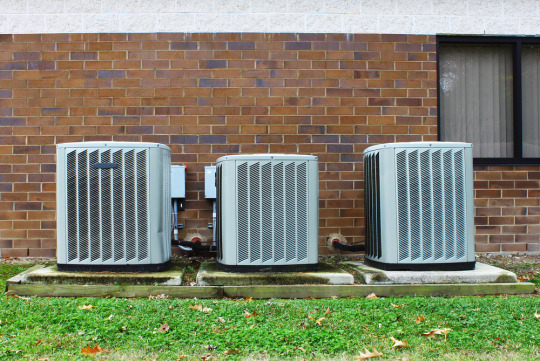
Ancient Beginnings
The quest for indoor comfort began with the Romans, who pioneered the hypocaust system. This early form of central heating allowed hot air to circulate under floors and through walls, providing warmth to the Roman baths. Similarly, ancient Persians used wind towers and qanats to achieve cooling and ventilation. These ingenious methods laid the foundational principles of thermal comfort, emphasizing the importance of environmental control in human dwellings.
The Middle Ages to the 19th Century
As we moved into the Middle Ages and beyond, the focus on HVAC technologies saw a slow but steady progression. Fireplaces and stoves became the primary sources of heating, but their efficiency was minimal. It wasn't until the 18th Century that the invention of the steam heating system by James Watt offered a glimpse into the future of HVAC. This period marked the beginning of the use of external energy sources to manage indoor climates, setting the stage for the modern era of heating and cooling.
The Birth of Modern HVAC
The 20th Century ushered in significant advancements in HVAC technologies. Willis Carrier's invention of the modern air conditioner in 1902 was a landmark event, introducing the concept of not only heating but also cooling and humidity control. This invention revolutionized how people experienced indoor environments, making it possible to achieve comfort in even the hottest climates. The development of central heating systems, using boilers and radiators, further enhanced the ability to maintain consistent indoor temperatures.
The Rise of Energy Efficiency
In the latter half of the 20th Century, the energy crises highlighted the importance of efficiency in HVAC systems. This period saw the introduction of laws and regulations aimed at reducing energy consumption. Innovations such as the programmable thermostat and advancements in heat pump technology allowed for greater control over heating and cooling systems, optimizing their performance and reducing energy waste. These developments underscored the industry's shift towards sustainability and environmental responsibility.
The Digital Age and Smart Technologies
The 21st Century has been defined by the integration of digital technologies into HVAC systems. Smart thermostats and IoT (Internet of Things) devices now offer unprecedented control over indoor climates, allowing systems to adapt to the needs of the occupants dynamically. These smart-systems can optimize energy use, reduce costs, and even predict maintenance needs, thereby extending the lifespan of HVAC equipment. The focus has also expanded to include indoor air quality, recognizing its critical impact on human health.
Green Technologies and Sustainability
The latest chapter in the evolution of HVAC is marked by a strong emphasis on sustainability and green technologies. Innovations such as geothermal heat pumps, solar-powered air conditioning, and the use of eco-friendly refrigerants are paving the way for a future where HVAC systems not only provide comfort but do so in a way that minimizes environmental impact. The industry is now at the forefront of the fight against climate change, with ongoing research focused on reducing carbon footprints and harnessing renewable energy sources.
The Future of HVAC
As we look to the future, the evolution of HVAC systems is far from complete. The drive towards smarter, more efficient, and environmentally friendly technologies continues to shape the industry. Advances in materials science, artificial intelligence, and green building design promise to further revolutionize how we heat, cool, and ventilate our spaces. The goal is clear: to achieve optimal indoor environments that support human health and well-being while protecting the planet.
The journey of HVAC systems from ancient innovations to today's smart technologies illustrates humanity's ingenuity and adaptability. As we continue to innovate and improve, the future of HVAC holds the promise of even greater comfort, efficiency, and sustainability. The evolution of HVAC is a testament to our ongoing quest for a better living environment, one that respects both our needs and those of the environment we inhabit.
0 notes
Text
Live Brief Project
Idea Generation and Developement
Goals and challenges
One of the less explored areas in the park is the Hypocaust and the Roman Mosaic building, mainly because of its relatively difficult-to-get location. When talking with the client, she told us that many times, groups of students go to the park as part of their 'My Local Area' study but that even if they are exploring the park in almost its totality they usually tend to avoid going to the Hypocaust because of this factor.
This building/location is actually one of the most interesting places in the park and it is full of history and fun facts; like the mistake in the mosaic; so when I started to think about ideas for the project this area caught my attention right away and I could see a lot of potential for it to attract people, especially kids/young people.
In the client's brief, they specified some of the project's goals and success criteria; my idea will approach these two specific points from the client's brief:
Increase by 30% hypocaust visits (1000 visits a month)
Improve the offer for local schools 'My Local Area Study'
One of the primary aims that the client has for this digital project is to engage audiences who already explore the park but are perhaps unaware or disengaged with its historical significance, so I'm focusing my idea on achieving that. At the same time, this idea will create a link between the St. Albans Museum, the Hypocaust-Mosaic building, and the Verulamium Museum.
The idea
MOS-AR: Explore the Hypocaust
My idea is to do a Web-AR Experience for the Hypocaust-Roman Mosaic Building.
The experience will be called 'MOS-AR' (Mosaic + AR) and it's a series of puzzle games and interactive information ('fun facts', 'did you know...') triggered by the actual mosaic inside the Hypocaust building.
The experience will be guided by a virtual character named Mos, a character inspired by the Roman Sea God from one of the other mosaics found in St. Albans, and will have 3 different levels depending on the age of the user:
Game 1 (Easiest Level): For kids between the ages of 3 and 9 years.
Game 2 (Mid Complexity Level): For teens between the ages of 10 to 15 years.
Game 3 (Complex Level): For audiences from 16 years onward; adults in general
With this experience, the user gets the chance to win a variety of prizes if they can successfully complete the game under the time limit; these prizes will renew each month and will have some constraints so that they are not overused by the public.
At the end of each game, Mos will invite the users to visit his mosaic 'portrait' at the Verulamium, where his soul is trapped. This will serve as a link between the Hypocaust and the Verulamium Museum, and can potentially become another similar WebAR experience where the users scan the Roman God Mosaic and 'free' his soul after completing a quiz or a puzzle. This will eventually attract more people to these locations and get them to engage with the Hypocaust-Mosaic Building and its history, and at the same time create a link between the Hypocaust and the Verulamium Museum.


Rules and Prizes
The prizes will be the same for all the games. The dynamic will work this way: each time the user wins they will unlock two things, a filter for them to take pictures/selfies and a ‘Spin the Wheel’ where the user gets the chance to win different prizes from the St. Albans Museum Café or Gift Shop, such as coffee discounts, specific merch discount (like extra discounts on clearance stuff, a free pastry when you buy a large coffee, a set of stickers from the gift shop, etc.) This will be completely random and the prizes will change each month.

Promotion of the Experience
The experience will be 'promoted' with several posters located in key areas of both St. Albans town (inside the Museum, walls, poles, etc.) and the actual park (the entrance, benches, boards), inviting the visitors to go visit the Hypocaust.
Developement of the AR Experience
One of the client's requirements for the project is using an App-free methodology to prevent users from dropping out of the experience and effectively engaging with them. Because of this, the perfect approach is to create the experience using Web AR Technologies.
What are WebAR Technologies?
Web-based Augmented Reality (WebAR) is the technology that allows augmented reality experiences to run in a web browser. It is a very useful technology as it doesn't require the user to download or buy any apps or special equipment to access the experiences.
Why Web AR?
Several studies have shown that adding interactivity to advertisement content can make its message stick to the audience's mind up to 80% more than static content does.
What makes this technology so attractive and user-friendly is that you can achieve that extra level of interaction without the need for a third-party app or website, users just have to enter a link or scan a QR code that immediately directs them to the browser to 'live' the experience.
'Offering the opportunity to ‘live the experience’ and ‘touch and feel a product’ is a powerful way of encouraging user engagement and purchase intent.' (Blippar, 2018)
There are many Web AR tools/software out there and they each have their pros and cons. However, after extensive research on these tools and what they offer, I concluded that the best option to develop this AR experience further would be 'Blippar'.
Blippar offers 3 main types of AR experiences that you can create with their Studio:
Marker-based AR: A specific picture (marker) is used as a target for the experience: the user points to their live mobile camera and the device must recognize the target to trigger the AR content.
Markerless AR: The user is the one who moves the virtual content through the space and decides where they want to place it. There's no need for a specific marker or a real-world anchor to trigger the AR content.
Location-based AR: The AR content is tied to a specific location in the real world. For this type of AR experience to work correctly, the device must be able to accurately figure out the location of the user.
The type that will be used for the creation of this experience is Marker-based AR: the experience will be triggered by the real-time 'image' of the mosaic.
Alongside the many functionalities that Blippar offers, they offer real-time feedback on your experience to monitor how many people interact with it and how your audience grows; this is ideal for the client as they want to know and monitor if and how the visits to the park improve.
References
What Is WebAR? How Web-based AR Works | Built In
Reinventing digital ads: AR increases engagement by 30% (blippar.com)
3 different types of AR explained: marker-based, markerless & location - News - Blippar
0 notes
Text
The Roman baths in Hisarya, Bulgaria.
Are notable archaeological sites that offer a glimpse into the rich history of the region during Roman times.
Hisarya, known as Diocletianopolis in antiquity, was established during the Roman Empire.
The Roman baths are a testament to the advanced engineering and architectural practices of the Romans.
The baths are part of a larger archaeological complex that includes well-preserved remnants of Roman walls, gates, and public buildings.
The thermal baths in Hisarya were an essential component of Roman urban planning, reflecting the Romans' emphasis on public hygiene and social activities.
Visitors can explore the remains of the baths, including the hypocaust system used for heating.
The hypocaust system was a sophisticated Roman heating technology involving a network of raised floors and channels through which hot air circulated, providing warmth to the rooms above.
The archaeological site is open to the public, allowing visitors to walk through the well-preserved ruins and gain insights into the daily life of the ancient inhabitants.
Interpretative signs and guided tours may be available to provide historical context.
Archaeological research and excavations may still be ongoing, uncovering new details about the Roman baths and the overall history of Hisarya.
#edisonmariotti @edisonblog
.br
Os banhos romanos em Hisarya, Bulgária.
São notáveis sítios arqueológicos que oferecem um vislumbre da rica história da região durante a época romana.
Hisarya, conhecida como Diocletianópolis na antiguidade, foi fundada durante o Império Romano.
Os banhos romanos são um testemunho das práticas avançadas de engenharia e arquitetura dos romanos.
Os banhos fazem parte de um complexo arqueológico maior que inclui vestígios bem preservados de muralhas romanas, portões e edifícios públicos.
Os banhos termais em Hisarya foram uma componente essencial do planeamento urbano romano, reflectindo a ênfase dos romanos na higiene pública e nas actividades sociais.
Os visitantes podem explorar os restos dos banhos, incluindo o sistema hipocausto utilizado para aquecimento.
O sistema hipocausto era uma sofisticada tecnologia de aquecimento romana que envolvia uma rede de pisos elevados e canais por onde circulava o ar quente, proporcionando calor aos quartos superiores.
O sítio arqueológico está aberto ao público, permitindo aos visitantes percorrer as ruínas bem preservadas e conhecer o quotidiano dos antigos habitantes.
Sinais interpretativos e visitas guiadas podem estar disponíveis para fornecer contexto histórico.
Pesquisas arqueológicas e escavações podem ainda estar em andamento, revelando novos detalhes sobre os banhos romanos e a história geral de Hisarya.

1 note
·
View note